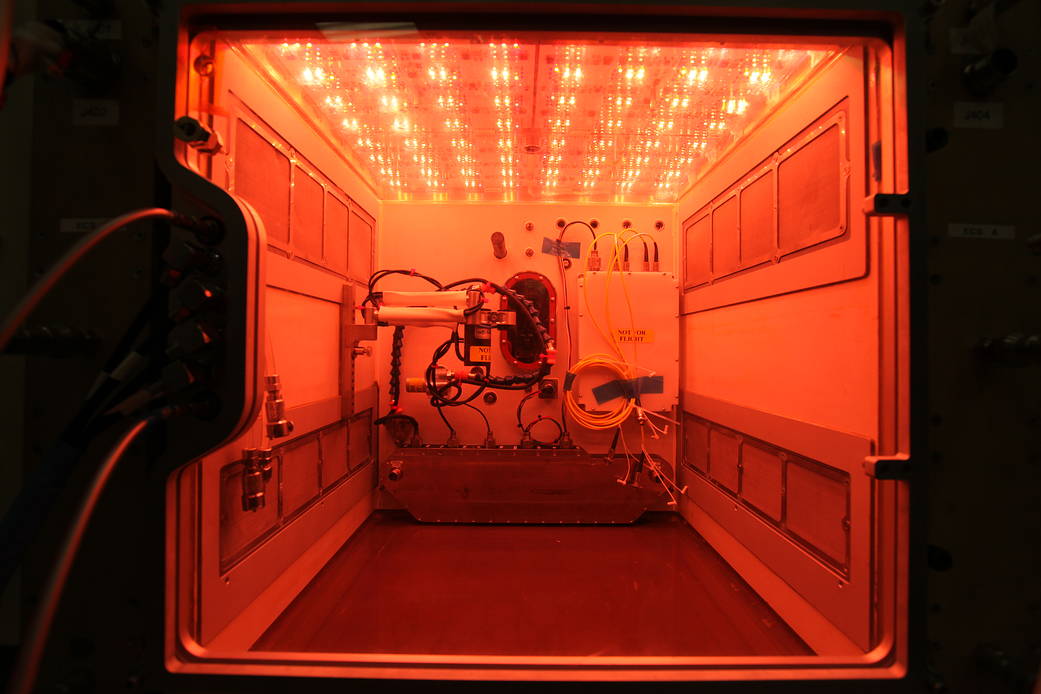A high fidelity test version of NASA’s Advanced Plant Habitat (APH), the largest plant chamber built for the agency, arrived at Kennedy Space Center in Florida the third week of November, 2016. The engineering development unit arrived by truck, was offloaded and transported to a laboratory at the Space Station Processing Facility. Inside the lab, NASA engineers, and scientists and technicians will train with the test unit to learn how to handle and assemble it before the actual APH unit arrives early next year. They also will test how the science integrates with the various systems of the plant habitat.
The unit is a closed-loop system with a controlled environment than can house large plants. The system will use red, green and blue LED lights, similar to the Veggie growth system that is currently on the International Space Station. The APH also has the capability of using white LEDs and infrared light. The APH unit will have 180 sensors and four times the light output of Veggie. The small-scale experiment, called Plant Habitat 1 or PH01, will contain Arabidopsis seeds, small flowering plants related to cabbage and mustard. PH01 and the APH unit will be delivered to the space station in 2017.
Image Credit: NASA/Bill White



























